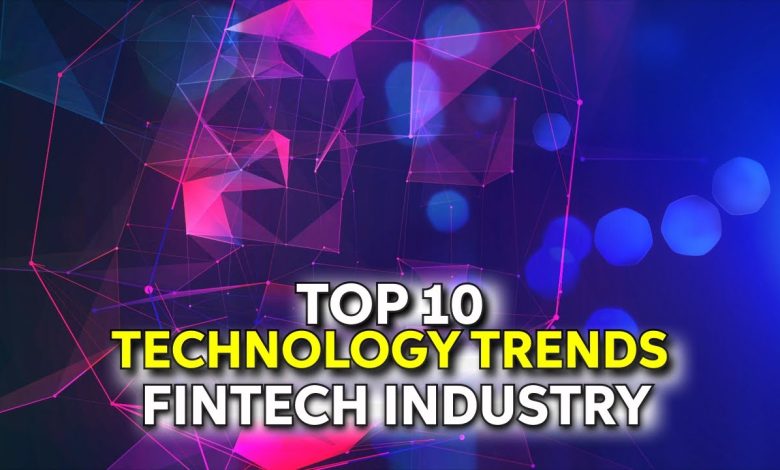The Future of Finance: Technology Trends in the Fintech Industry 2022

Hello Guys! Welcome to another video. Today’s video is about the top 10 technology trends in fintech industry. Make sure to watch the video till the end.
▶️ Please Subscribe:
The fintech industry has revolutionized and transformed the way business is done all around the globe.
Financial institutions and tech companies have driven innovative and disruptive technologies, impacting the global economy. What’s next for global fintech? Here are the top 10 fintech tech trends.
Time🕝
0:00 Intro
0:28 Internet of Things
1:15 Regulatory Technology
2:14 Cloud computing
3:31 Robotic process automation
5:06 Blockchain Technology
6:03 Cross border Ecommerce
6:49 Artificial intelligence and machine learning
8:03 Decentralized Finance
9:08 Open API or Open banking
10:20 Banking as a Service
The internet of things refers to how human-made devices can send and receive data online. TVs, bags, luggage, washing machines, and dishwashers could be modified to support this technology, making them interactive and smart. IoT lets you access Netflix and YouTube on your smart tv. IOTs aren’t just useful at home. But corporations and businesses can use this mechanism to boost productivity and improve operations management.
This may sound not very easy, but it’s not. It uses technology to regulate financial processes. Regtech focuses on monitoring, reporting, and compliance, which comprise its framework. Regtech is gaining popularity in the financial industry because it helps businesses comply more efficiently and cheaply with regulations. Cloud computing helps many companies comply with regulations.
Cloud computing includes OneDrive, Dropbox, and Google Drive. The cloud provides servers, storage, databases, networking, software, and intelligence. Cloud services boost innovation and productivity. Companies needed more storage space without moving computers or losing data. Cloud computing allows companies to remotely access apps, software, and databases without data loss.
RPA allows anyone to define robot or bot instructions. RPA bots do human tasks faster and better. RPA doesn’t involve robots. RPA automation uses software bots. RPA automates time-consuming manual tasks. Large companies use RPA to automate processes. Call center complaints and order processing.
Blockchain technology is probably familiar to you. This technology stores information securely so it can’t be changed, hacked, or destroyed. It’s a digital ledger of transactions duplicated across all blockchain computers. This technology records and distributes digital information without alteration or deletion. Blockchain’s importance in the cryptocurrency ecosystem is well-known.
Cross-border eCommerce is buying or selling online from an international vendor. The iPhone is a US-made exclusive sold worldwide. The smart device can be ordered and delivered in days. Cross-border e-commerce has helped businesses expand. Businesses use this model to increase sustainability and attract international customers.
Are square robots uncontrollably cleaning mall floors? These devices can clean dirt quickly. AI and ML make these robots human-like. Which terms apply? AI lets machines mimic human tasks. Machine learning lets machines learn without being reprogrammed. This technology makes computers and systems smart, like humans, to solve complex problems autonomously.
Decentralized finance removes intermediaries’ control over money, financial products, and services. Blockchain-based smart contracts mediate Defi transactions. Cryptocurrency channels and exchanges are decentralized. Blockchain transactions are irreversible because they’re nonregulatory and built-in. Defi protocol backers may disappear with investor money.
Open banking transforms finance. Open banking allows third-party payment service providers to access consumer banking information and build applications and services around the consumer banking institution through connected APIs. Banks and fintech startups adopt open banking. It protects you and your customers from fraud when processing payments and data. It’s improved bank partnerships.
BaaS is an end-to-end service that allows digital banks and third-party providers to offer banking services and regulated infrastructure through APIs. Digital solution providers pay to use the bank’s BaaS platform. After such payments, financial institutions open their APIs to third-party service providers and give them the financial infrastructure to deliver innovative products and services to customers.
Please! watch the video till the end. 😉
If you love my video please SUBSCRIBE and don’t forget to press the bell for alerts on the latest video, 🔔 like, comment and share. Stay safe and Love all. 😍😘
—————-
▶️Please Subscribe:
—————-
#fintechindustry #fintechstatistics #technologytrends #fintechindustrytrends #technologyindustry #fintechnews #businessnews #fintechbusiness #technologytrends





Don’t invest
<>*what is the best way to make money from investing